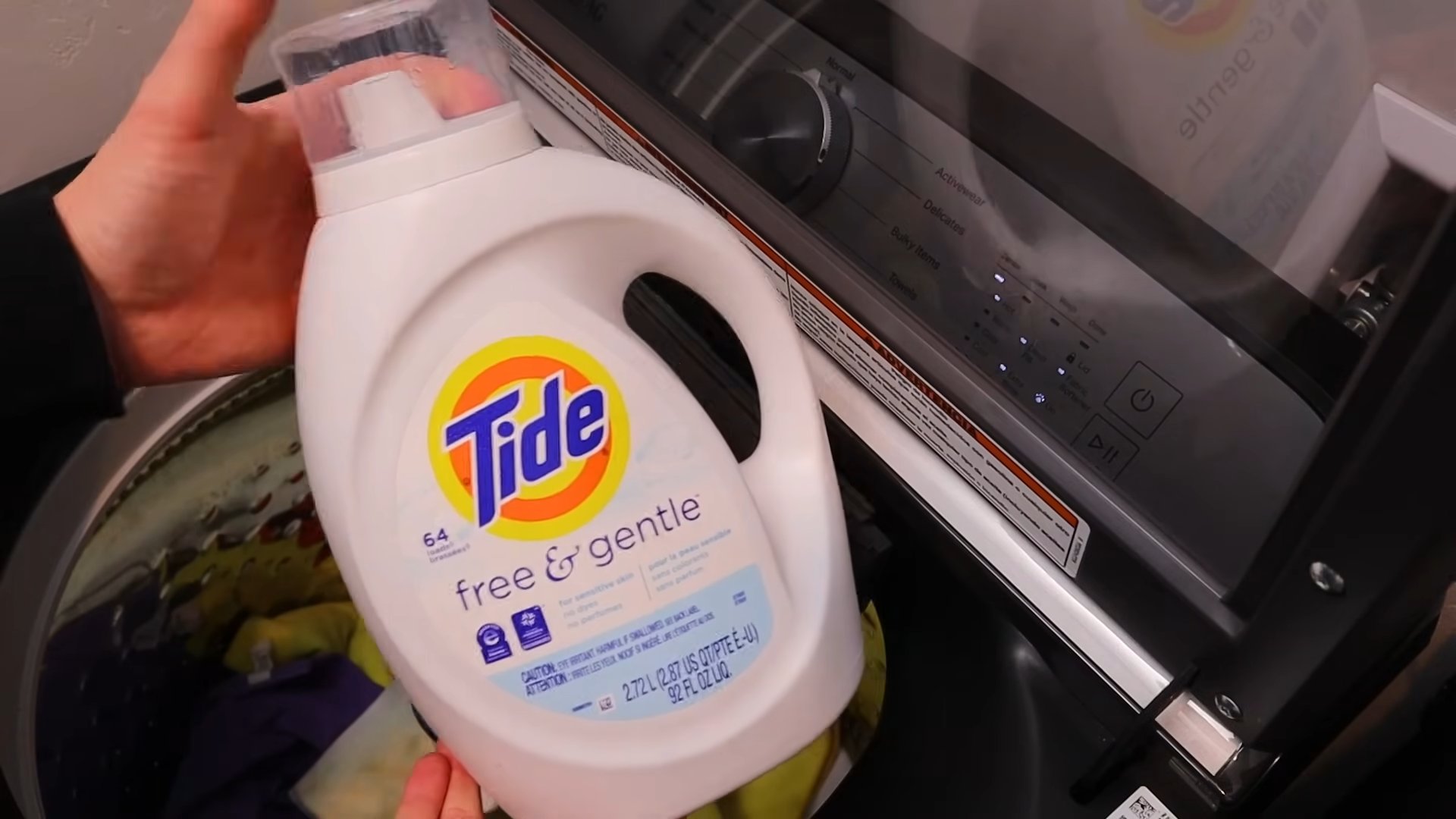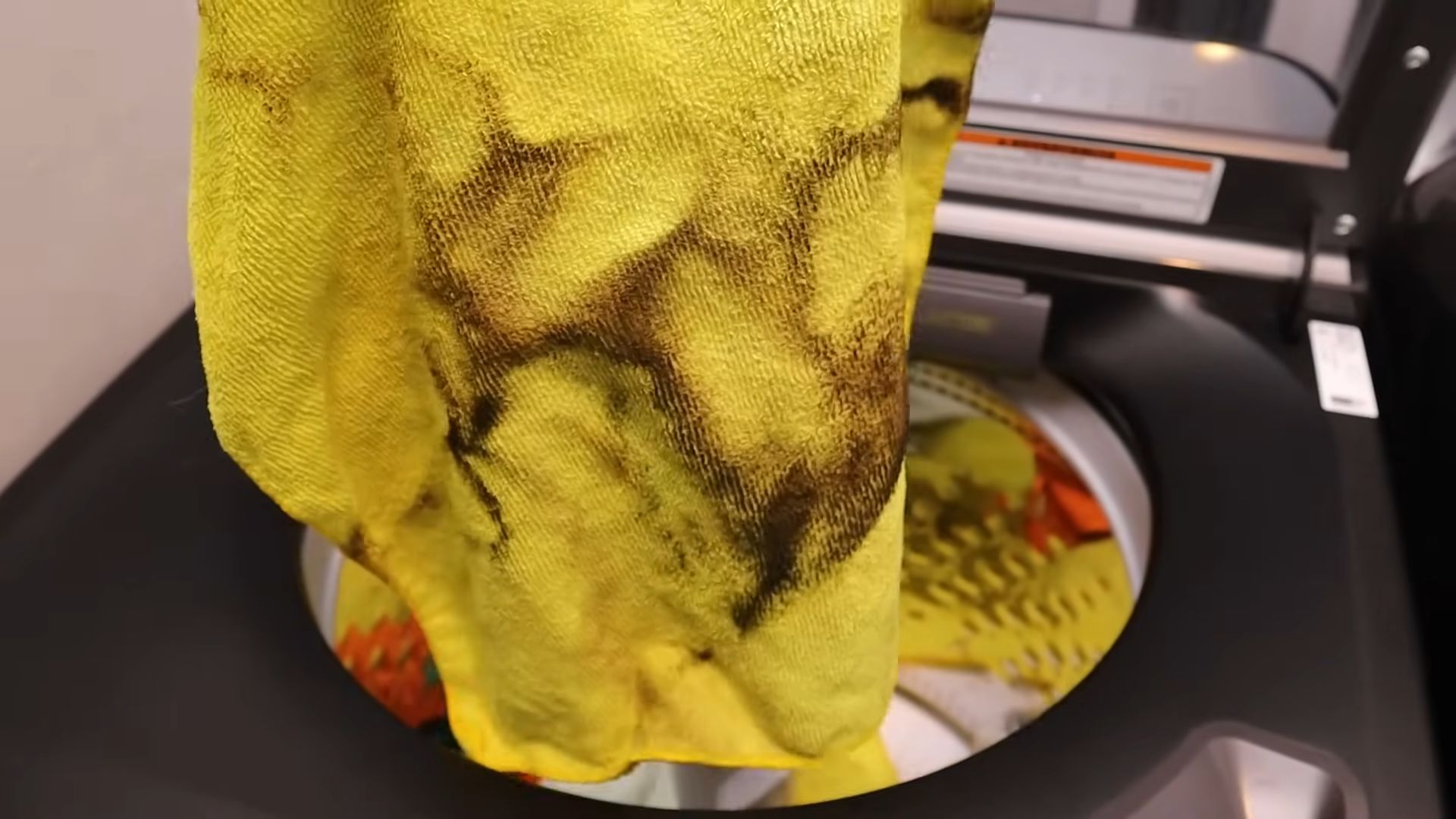Wash Microfiber Clothes Correctly? Are you tired of your favorite microfiber cloths losing their absorbency and softness after just a few washes? I know I was! It’s frustrating to invest in these amazing cleaning tools only to have them turn into scratchy, ineffective rags. But don’t despair, because I’m here to share some game-changing DIY tricks that will keep your microfiber cloths in tip-top shape.
Microfiber cloths have revolutionized cleaning, and their story is relatively recent. Developed in the late 20th century, they quickly gained popularity for their superior cleaning abilities compared to traditional cotton cloths. Their unique construction, with incredibly fine fibers, allows them to trap dirt and grime effectively. However, this very construction also makes them susceptible to damage from improper washing techniques.
Why is it so important to wash microfiber clothes correctly? Well, improper washing can clog the fibers, reducing their absorbency and cleaning power. Plus, harsh chemicals and high heat can damage the delicate fibers, shortening their lifespan. In this article, I’ll walk you through simple, yet effective, DIY methods to ensure your microfiber cloths stay soft, absorbent, and ready to tackle any cleaning task. Get ready to say goodbye to scratchy, ineffective cloths and hello to a sparkling clean home!

How to Wash Microfiber Cloths Like a Pro (and Keep Them Super Absorbent!)
Okay, so you’ve got a pile of microfiber cloths. Maybe you use them for cleaning your car, dusting your house, or detailing your electronics. Whatever the purpose, you know these little guys are amazing at picking up dirt and grime. But here’s the thing: washing them wrong can ruin their effectiveness. They’ll lose their absorbency, start to streak, and basically become useless. I’ve been there, done that, and learned the hard way! So, I’m going to share my tried-and-true method for washing microfiber cloths so they stay fluffy, absorbent, and ready to tackle any cleaning job.
Why Microfiber Needs Special Treatment
Microfiber cloths are made of super-fine synthetic fibers, usually a blend of polyester and polyamide. These fibers create a huge surface area, which is why they’re so good at trapping dirt and liquids. However, this also means they easily attract and hold onto things like:
* Lint: Cotton towels are microfiber’s worst enemy!
* Oils and Waxes: Especially if you use them for car detailing.
* Fabric Softener: This is a big no-no! It coats the fibers and reduces their absorbency.
* Detergent Residue: Too much detergent can leave a film on the cloths.
Basically, you need to be careful about what you wash them with and how you wash them.
What You’ll Need
Before we dive in, let’s gather our supplies. This is what I always have on hand when it’s microfiber laundry day:
* Microfiber Detergent: I highly recommend using a detergent specifically designed for microfiber. These detergents are formulated to remove oils and waxes without leaving residue. If you don’t have microfiber detergent, you can use a mild, clear, fragrance-free detergent.
* Laundry Bag (Optional): This is great for keeping your microfiber cloths separate from other laundry and preventing them from picking up lint.
* Washing Machine: Obviously!
* Clothes Dryer (Optional): You can also air dry them.
* White Vinegar (Optional): For a boost of cleaning power and to help remove odors.
* Baking Soda (Optional): Another great odor absorber.
Step-by-Step Washing Guide
Alright, let’s get down to business! Here’s my step-by-step guide for washing microfiber cloths:
1. Sort Your Cloths: This is crucial! Separate your microfiber cloths based on their use. For example, keep car detailing cloths separate from household cleaning cloths. This prevents cross-contamination. I usually have three piles:
* Car Detailing: These cloths tend to be the dirtiest and may contain waxes and polishes.
* Household Cleaning: These are used for general cleaning around the house.
* Delicate Cleaning: These are for electronics, lenses, and other sensitive surfaces.
2. Pre-Treat Stains (If Necessary): If you have any heavily soiled cloths with stubborn stains, pre-treat them before washing. I usually use a small amount of microfiber detergent directly on the stain and gently rub it in. Let it sit for about 15-20 minutes before washing.
3. Load the Washing Machine: Place your microfiber cloths in the washing machine. If you’re using a laundry bag, put them inside first. Don’t overload the machine! Microfiber needs room to move around freely to get properly cleaned. I usually wash about 15-20 cloths at a time.
4. Add Detergent: Use the recommended amount of microfiber detergent. If you’re using a regular detergent, use a very small amount – less is more! Too much detergent can leave residue. I usually use about half the amount I would use for a regular load of laundry.
5. Add White Vinegar (Optional): If you want to boost the cleaning power and remove odors, add about 1/2 cup of white vinegar to the washing machine’s dispenser. Don’t worry, the vinegar smell will dissipate during the wash cycle.
6. Select the Wash Cycle: Choose a gentle or delicate cycle with cold or warm water. Hot water can damage the fibers. I always use cold water to be on the safe side.
7. Run the Wash Cycle: Let the washing machine do its thing!
8. Rinse Thoroughly: Make sure all the detergent is rinsed out of the cloths. If you’re concerned about detergent residue, you can run an extra rinse cycle.
9. Dry the Cloths: This is where you have two options:
* Tumble Dry on Low Heat: If you choose to tumble dry, use the lowest heat setting possible. High heat can melt the fibers and damage the cloths. I also recommend using dryer balls instead of dryer sheets. Dryer sheets contain fabric softener, which we want to avoid.
* Air Dry: This is my preferred method. Simply hang the cloths on a clothesline or drying rack and let them air dry. This is the gentlest way to dry them and helps them last longer.
10. Inspect and Store: Once the cloths are dry, inspect them to make sure they’re clean and free of lint. If you find any lint, you can use a lint roller to remove it. Store your clean microfiber cloths in a clean, dry place. I keep mine in a plastic bin to protect them from dust and dirt.
Dealing with Specific Types of Microfiber Cloths
Not all microfiber cloths are created equal. Here’s how I adjust my washing routine for different types of cloths:
Car Detailing Cloths
These cloths often contain waxes, polishes, and other chemicals. I always wash them separately from other microfiber cloths. I also use a slightly stronger microfiber detergent and sometimes add a pre-soak with hot water and detergent before washing. If they are heavily soiled, I might even wash them twice.
Household Cleaning Cloths
These cloths are usually less soiled than car detailing cloths. I wash them with a mild microfiber detergent and cold water. I also add a 1/2 cup of white vinegar to the wash cycle to help remove odors.
Delicate Cleaning Cloths
These cloths are used for cleaning electronics, lenses, and other sensitive surfaces. I wash them separately from other microfiber cloths with a very mild detergent and cold water. I always air dry these cloths to prevent any damage.
Things to Avoid
Here’s a quick recap of what *not* to do when washing microfiber cloths:
* Don’t use fabric softener.
* Don’t use bleach.
* Don’t wash with cotton towels.
* Don’t use high heat in the dryer.
* Don’t overload the washing machine.
* Don’t use too much detergent.
Troubleshooting
Sometimes, even with the best intentions, things can go wrong. Here are some common problems and how I fix them:
* Cloths are still oily: If your cloths are still oily after washing, try pre-soaking them in hot water and detergent before washing. You can also try using a stronger microfiber detergent.
* Cloths are streaky: If your cloths are streaky, it’s likely due to detergent residue. Try running an extra rinse cycle or using less detergent in the future.
* Cloths are not absorbent: If your cloths are not absorbent, it’s likely due to fabric softener or detergent residue. Try washing them with white vinegar to remove the residue.
* Cloths are full of lint: If your cloths are full of lint, try washing them in a laundry bag to prevent them from picking up lint from other laundry. You can also try using a lint roller to remove the lint after washing.
My Personal Tips and Tricks
Over the years, I’ve learned a few extra tricks that help me keep my microfiber cloths in tip-top shape:
* Shake out your cloths before washing: This helps remove loose dirt and debris.
* Use a mesh laundry bag: This protects your cloths from damage and prevents them from picking up lint.
* Air dry your cloths whenever possible: This is the gentlest way to dry them and helps them last longer.
* Replace your cloths regularly: Even with proper care, microfiber cloths will eventually wear out. I usually replace mine every 6-12 months, depending on how often I use them.
* Invest in good quality microfiber cloths: Cheaper cloths tend to be less durable and may not wash as well.
By following these tips, you can keep your microfiber cloths clean, absorbent, and ready to tackle any cleaning job. Happy cleaning!

Conclusion
So, there you have it! Mastering the art of washing microfiber cloths correctly isn’t just about cleanliness; it’s about extending the life of your cleaning arsenal and maximizing its effectiveness. Think of it this way: investing a little extra care in your microfiber cloths is an investment in a cleaner, healthier home and a more sustainable cleaning routine.
Why is this DIY trick a must-try? Because improperly washed microfiber cloths become magnets for dirt and grime, defeating their very purpose. They lose their absorbency, their ability to trap dust, and can even scratch delicate surfaces. By following these simple steps, you’ll ensure your microfiber cloths remain the workhorses they’re meant to be, saving you money on replacements and reducing waste.
But don’t just take our word for it! The beauty of this method lies in its adaptability. Feel free to experiment with variations to suit your specific needs and preferences. For instance, if you’re dealing with heavily soiled cloths used for tough cleaning tasks like grease or oil, consider adding a tablespoon of borax to your washing machine for an extra boost of cleaning power. Just be sure to test a small, inconspicuous area of the cloth first to ensure it doesn’t affect the color or texture.
Another variation involves using a mesh laundry bag. This is particularly helpful for smaller microfiber cloths or delicate items like dusting cloths. The bag prevents them from getting tangled with other laundry and helps to maintain their shape. You can also pre-soak heavily soiled microfiber cloths in a solution of warm water and a mild detergent before washing them in the machine. This can help to loosen stubborn dirt and grime, making them easier to remove during the wash cycle.
For those concerned about using harsh chemicals, consider using a natural laundry detergent made with plant-based ingredients. These detergents are gentler on your microfiber cloths and the environment. You can also add a cup of white vinegar to the rinse cycle to help remove any lingering detergent residue and soften the cloths.
Remember, the key is to avoid fabric softeners and dryer sheets at all costs. These products coat the fibers of the microfiber cloths, reducing their absorbency and making them less effective at cleaning. If you want to soften your microfiber cloths, try adding a few dryer balls to the dryer instead.
We are confident that by implementing these techniques, you’ll notice a significant improvement in the performance and longevity of your microfiber cloths. They’ll be cleaner, more absorbent, and ready to tackle any cleaning challenge you throw their way.
So, what are you waiting for? Give this DIY trick a try and see the difference for yourself! We’re eager to hear about your experiences. Share your tips, tricks, and results in the comments below. Let’s build a community of microfiber cloth cleaning experts! We encourage you to share this article with your friends and family so they too can learn how to properly wash microfiber cloths and keep their homes sparkling clean. Your feedback is invaluable, and we’re always looking for ways to improve our recommendations. Happy cleaning!
Frequently Asked Questions (FAQ)
Why is it so important to wash microfiber cloths separately?
Microfiber cloths are designed to attract and trap dirt, dust, and grime. When washed with other laundry, they can pick up lint and other fibers, which can clog the tiny pores of the microfiber and reduce its effectiveness. Washing them separately prevents this cross-contamination and ensures they remain clean and absorbent.
Can I use bleach when washing microfiber cloths?
No, it’s generally not recommended to use bleach on microfiber cloths. Bleach can damage the delicate fibers and reduce their absorbency. It can also cause the colors to fade. If you need to disinfect your microfiber cloths, consider using a solution of white vinegar and water or a laundry sanitizer specifically designed for delicate fabrics.
What temperature should I use to wash microfiber cloths?
It’s best to wash microfiber cloths in warm water. Hot water can damage the fibers and cause them to shrink. Cold water may not be effective at removing all the dirt and grime. Warm water strikes the perfect balance, effectively cleaning the cloths without compromising their integrity.
How often should I wash my microfiber cloths?
The frequency of washing depends on how often you use them and how dirty they get. For cloths used for light cleaning, such as dusting, you can wash them after a few uses. For cloths used for heavier cleaning, such as wiping up spills or cleaning bathrooms, you should wash them after each use. It’s always better to err on the side of caution and wash them more frequently than less.
Can I use fabric softener on microfiber cloths?
Absolutely not! Fabric softener is the enemy of microfiber. It coats the fibers, reducing their absorbency and making them less effective at cleaning. Avoid fabric softener at all costs. If you want to soften your microfiber cloths, try adding a few dryer balls to the dryer instead.
Is it okay to put microfiber cloths in the dryer?
Yes, you can put microfiber cloths in the dryer, but it’s important to use a low heat setting. High heat can damage the fibers and cause them to melt or shrink. It’s also best to avoid using dryer sheets, as they can coat the fibers and reduce their absorbency. Alternatively, you can air dry your microfiber cloths. This is a gentler option that can help to prolong their lifespan.
What type of detergent should I use to wash microfiber cloths?
Use a mild, liquid detergent that is free of dyes and perfumes. Powdered detergents can leave residue on the cloths, reducing their absorbency. Avoid detergents that contain fabric softener or bleach. A simple, unscented detergent is the best choice for washing microfiber cloths.
How do I remove stubborn stains from microfiber cloths?
For stubborn stains, pre-treat the cloths with a stain remover before washing them. You can also try soaking them in a solution of warm water and a mild detergent for a few hours before washing them. For grease stains, try using a degreasing dish soap. For other types of stains, you can try using a stain remover specifically designed for that type of stain.
My microfiber cloths are starting to smell. What can I do?
If your microfiber cloths are starting to smell, it’s likely due to bacteria buildup. To eliminate the odor, try washing them with a cup of white vinegar. Vinegar is a natural disinfectant that can help to kill bacteria and remove odors. You can also try soaking them in a solution of warm water and baking soda before washing them.
How can I tell if my microfiber cloths are worn out and need to be replaced?
If your microfiber cloths are no longer absorbent, are starting to fray, or have lost their ability to trap dust and dirt, it’s time to replace them. Over time, the fibers of the microfiber cloths can break down, reducing their effectiveness. Replacing them regularly will ensure that you’re always cleaning with the best possible tools.





Leave a Comment